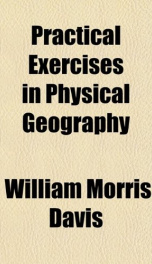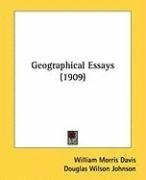practical exercises in physical geography

Purchase of this book includes free trial access to www.million-books.com where you can read more than a million books for free. This is an OCR edition with typos. Excerpt from book: EXERCISE II. A COASTAL PLAIN Object. To represent part of a coastal plain on a map, and to describe the form thus represented. Preliminary. The numbers on 31 show the altitude or height above sea level, in feet, of many points (dots near the numbers) in a district bordering the sea. The numbers preceded by a negative sign (as 15) indicate a negative altitude ; that is, a depth below sea level. This exercise uses 3 1, 3 2 (and 4 8) ; [also 6 15 and 35 1]. 1. 1. Draw a light (pencil) line in 3 1 separating all parts of the surface that are higher than 100' from all parts that are lower than 100'. This line must pass through all points marked 100 ; midway between points equally above and below 100, such as 105 and 95; nearer to 95 than to 110; nearer to 105 than to 90. 2. Explain the preceding rules. 3. Draw similar lines separating parts higher and lower than 200'; than 300'; than 0'. Mark the last line heavier than the others. What does this line represent ? 4. Do the same for 400', 500', 600'. [Intermediate lines for 50', 150', 250', etc., may also be drawn.] 2. 1. Would you ascend or descend (go uphill or downhill, up- slope or down-slope) in walking from K to A ? from G to H ? from H to F? from C to E ? along the 100' line ? along any of the lines that you have drawn ? 2. Do the (pencil) lines follow slanting or level paths ? Lines of this kind are called contour lines, or contours. 3. What is the (estimated) difference of altitude between H and G ? between B and A ? between two adjoining contour lines ? 4. The last difference is called the contour interval. Why ? 3. 1. Lay a strip of paper on 31 along the line AB ; mark short lines on the edge of the strip opposite A and B and print these letters there; mark dots on the strip edge at the contours of 0', 100',200...
Info about the book
Author:
Series:
Unknown
ISBN:
1115091719
Rating:
3/5 (3)Your rating:
0/5
Languge:
English
Users who have this book
Users who want this book
What readers are saying
What do you think? Write your own comment on this book!
write a commentif you like practical exercises in physical geography try:
Other books by this author
Do you want to read a book that interests you? It’s EASY!
Create an account and send a request for reading to other users on the Webpage of the book!



